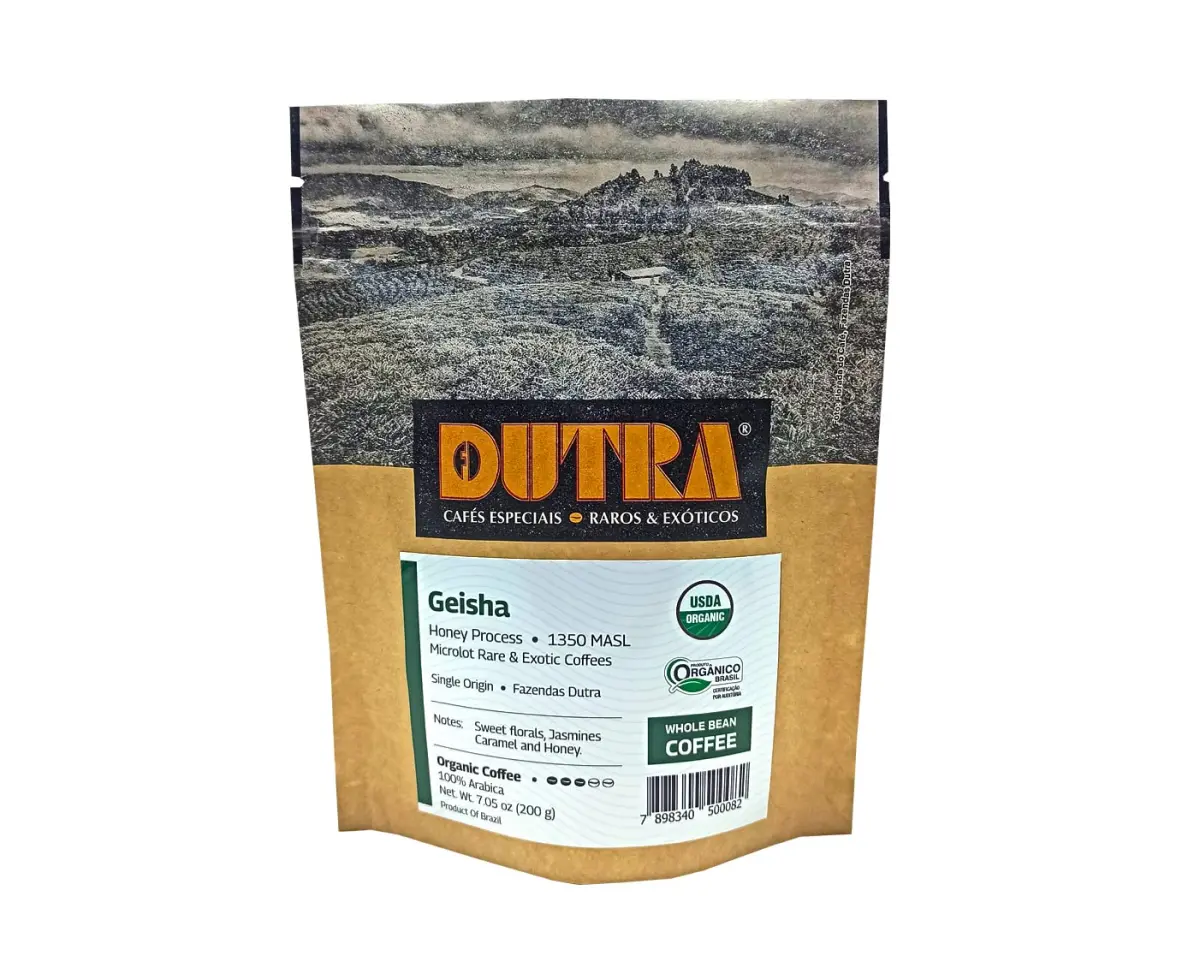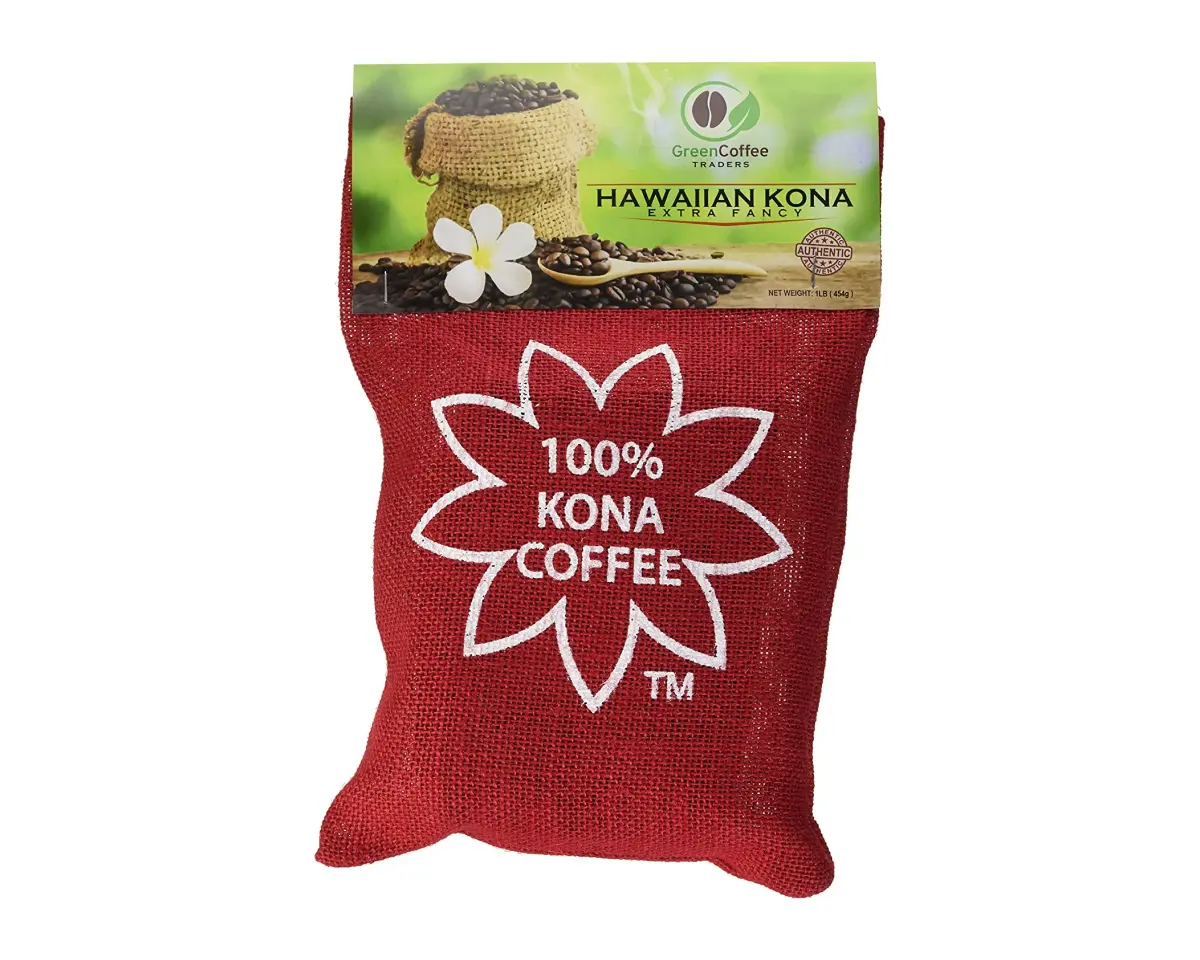If you are like me, you love your latte to have a creamy and smooth texture with a rich espresso flavor and a slightly sweet taste from the milk. The foam on top should be velvety and smooth, without large bubbles. If you are a coffee DIY enthusiast like me, you must be looking for coffee beans for a latte that will give you that unforgettable experience every time the latte craving hits.
As coffee aficionados know, the secret to a great latte is in the beans. So how do you choose the best coffee beans for a great latte? This article reveals the best coffee beans for lattes so you can always start your morning on the right foot.
Types of Coffee Beans
When it comes to creating a delectable latte, choosing the right coffee bean is paramount. Different beans come with distinct flavor profiles, textures, and aromas, all of which can significantly impact the final taste of your latte. In this section, we’ll delve into the two main types of coffee beans - Arabica and Robusta, explore the differences between single origin and blends, and examine the importance of flavor profiles and freshness.
Arabica vs. Robusta
The world of coffee is primarily dominated by two species of beans: Arabica and Robusta.
- Arabica: Known for its sweet, soft taste and higher acidity, Arabica beans make up about 60% of the world’s coffee production. These beans are often preferred for lattes because of their delicate flavor that pairs wonderfully with the creamy texture of milk. Arabica plants are more susceptible to pests and diseases, contributing to their generally higher price.
- Robusta: Robusta beans are more robust and have a stronger, harsher taste compared to Arabica. They contain almost double the amount of caffeine, which gives them a somewhat bitter edge. Though less common in lattes, Robusta can add a punch and complexity to the blend, particularly appealing to those who prefer a more potent coffee flavor.
Single Origin vs. Blends
The choice between single origin beans and blends also plays a crucial role in the latte-making journey:
- Single Origin: These beans come from one geographical location, whether it’s a single farm, region, or country. The benefit of single origin is the unique flavor that reflects the specific soil, climate, and cultivation methods of that area. It offers a purity of flavor but may lack complexity.
- Blends: Blends are a mix of beans from different origins. The goal of blending is to create a balanced flavor profile, combining the best attributes of different beans. Blends can provide a more consistent flavor, especially suitable for lattes, where a balanced and harmonious taste is often desired.
Flavor Profiles
Understanding the flavor notes of coffee beans can guide you to the perfect choice for your latte. Beans may have undertones of fruits, nuts, spices, or even floral notes. Lighter roasts tend to preserve more of the original bean flavor, while darker roasts bring out caramelized, toasted flavors. It’s a fascinating journey to explore how these flavors complement the milk in a latte and to find the ones that resonate with your taste buds.
Freshness of Beans
Last but not least, the freshness of the beans is an often overlooked but vital aspect. Coffee beans begin to lose their flavor soon after roasting. For the freshest taste, it’s recommended to buy beans that have been roasted within the last two weeks and grind them right before brewing. Freshly ground beans will help maintain the integrity of the flavor and contribute to a luscious and satisfying latte.
Our 5 Top Picks for Best Coffee Beans for Lattes
1. Ethiopian Coffee beans
4.7 out of 5
Ethiopian Marley Coffee One Love beans
I also enjoy coffee and mostly lattes made from Ethiopian coffee beans because of their unique flavor. Ethiopia has a rich history and culture of coffee production, with many of its coffee varieties being Arabica varieties that offer complex coffee flavors ranging from fruity and floral to spicy and earthy. This diversity is due to the wide Arabica varieties and the natural processing method.
Ethiopian coffee also has a bright acidity making them a great choice for a latte as the acidity cuts through the milk to create a balanced flavor profile you will enjoy. If you want to try something new and exciting in your latte, Ethiopian coffee beans are worth a try. Check here for Ethiopian coffee.
Pros:
- Has an excellent taste
- Made with 100% Arabica coffee
- Value for your money
- Supporting Reforestation
Cons:
- We could not find any cons
2. Brazilian Coffee Beans
4.6 out of 5
Geisha Dutra - Brazilian Coffee Beans
Brazilian beans are a popular choice for lattes due to their low acidity and caramel-like sweetness. They offer a smooth and mellow flavor that pairs well with milk.
Brazil produces Arabica variety coffee beans such as Bourbon, Catucaí, Catuaí, Mundo, and Novo. They also have a nutty flavor profile with notes of chocolate, caramel, and slightly nutty flavor, which makes them an excellent choice for lattes, as the milk and espresso combine. Brazilian coffee beans also have low acidity; the milk and espresso can combine without the acidity overwhelming the drink. Check out Brazilian coffee here.
Pros:
- Has an excellent taste
- Made with 100% Arabica coffee
- Organic
- Climate Pledge Friendly
- Good value for the money
Cons:
- We found the grain a bit drier
3. Colombian Beans
4.4 out of 5
Colombian Beans - San Francisco Bay Coffee
Colombian beans are usually Arabica variety and are known for their unique, balanced flavor profile, making them an excellent choice for lattes. Colombian coffee beans are grown in high altitudes, creating a unique microclimate ideal for growing coffee. The combination of high altitude, ample rainfall, and fertile soil creates the perfect conditions for coffee plants to thrive.
The result is coffee beans that are rich in flavor and have a bright acidity. In addition, the coffee is typically hand-picked and sorted to ensure the highest quality beans make it to market. This labor-intensive process helps ensure the beans are free from defects. Check Colombian coffee here.
Pros:
- Made with 100% Arabica coffee
- Good value for the money
- Overwhelming positive reviews
Cons:
- Some found the coffee stronger
4. Sumatra Mandheling Coffee Beans
4.3 out of 5
Another excellent coffee bean that goes well in lattes is the Sumatra Mandheling coffee bean. These coffee beans have low acidity, ensuring that you don’t get stomach upset or acid reflux, and they also combine well with milk without the acidity overwhelming your latte. The bold and complex flavors, including roasted chestnut, caramel, and chocolate, ensure a flavorful and rich latte whenever the latte craving hits!
This bold coffee also has a long-lasting aftertaste that will linger on your palate long after taking your last sip. So, if you want to try a unique and flavorful coffee bean for your latte, Sumatra Mandheling coffee beans are worth considering. Check Sumatra Mandheling coffee here.
Pros:
- Has an excellent taste
- Made with 100% Arabica coffee
- Organic
- Climate Pledge Friendly
- Good value for the money
Cons:
- Some found it tastes bitter
- Some found the medium roasted beans were too dark yet not oily
5. Kona Coffee Beans
4.3 out of 5
Kona coffee beans are grown in the rich, volcanic soil of the Kona district, which gives them a unique flavor profile that is rich and complex. The volcanic soil in this region is rich in minerals essential to coffee beans’ growth and flavor.
Once you taste 100% Kona coffee, whether a casual drinker or a connoisseur, you will find it hard to enjoy other coffee varieties. Its smooth and unbeatable flavor makes it a great choice for lattes and other coffee drinks. The fact that it is grown on limited land in the Kona district on the west coast of the Big Island of Hawaii makes it the most expensive coffee in the world. Check Kona coffee here!
Pros:
- Has an excellent taste
- Made with 100% Kona beans
Cons:
- More expensive than average coffee
Can You Use Regular Coffee Beans for Lattes?
Yes, you can use regular coffee beans for lattes. Choose the right type of coffee bean that is prepared properly to achieve the best results. Choosing coffee roasted to a medium to dark roast level is important. This is because these roasts tend to have a fuller body and richer flavor, which can stand up to the milk and create a more balanced flavor in the latte. And, since you should also consider acidity level to have a balanced cup of latte, choose coffee beans with low acidity level so that it doesn’t clash with the milk’s sweetness. Remember that since a latte is an espresso-based drink, medium-dark roasted beans will give you a distinct latte flavor. Read more on the differences between lattes and other coffee drinks in our article : Cortado vs Latte: Almost The Same, But Not!
The Perfect Latte Ratio
What’s the perfect latte ratio? If you want to prepare and enjoy a perfect latte, you have to adhere to a specific ratio of espresso, milk, and foam. The ideal latte ratio is 1/3 espresso, 2/3 steamed milk, and a small layer of frothed milk on top.
Here’s how to achieve the perfect latte ratio:
- Start by pulling one or two espresso shots, depending on your preference.
- Steam the milk using a steam wand or frother until it reaches the desired temperature and consistency. The milk should have a velvety texture with tiny microbubbles.
- Pour the steamed milk into the espresso, holding back the foam with a spoon.
- Spoon the foam on top of the milk and espresso, creating a foam layer on the surface.
However, this can vary depending on personal preference and the size of the latte being prepared. It’s important to note that the milk used in a latte should be properly steamed and frothed to achieve the desired texture and taste.
Verdict
What’s the best coffee bean for latte? I enjoy latte made from Sumatra Mandheling coffee beans due to its unique flavor. I consider this my personal best because it is grown in the high altitudes of the Indonesian island of Sumatra, which gives it a rich, earthy taste with hints of chocolate and a subtle herbal aroma. So if you want a delicious, balanced latte, you should try this! However, remember to experiment with different coffee beans from the list we have given you to find the one that offers the flavor that you love!









